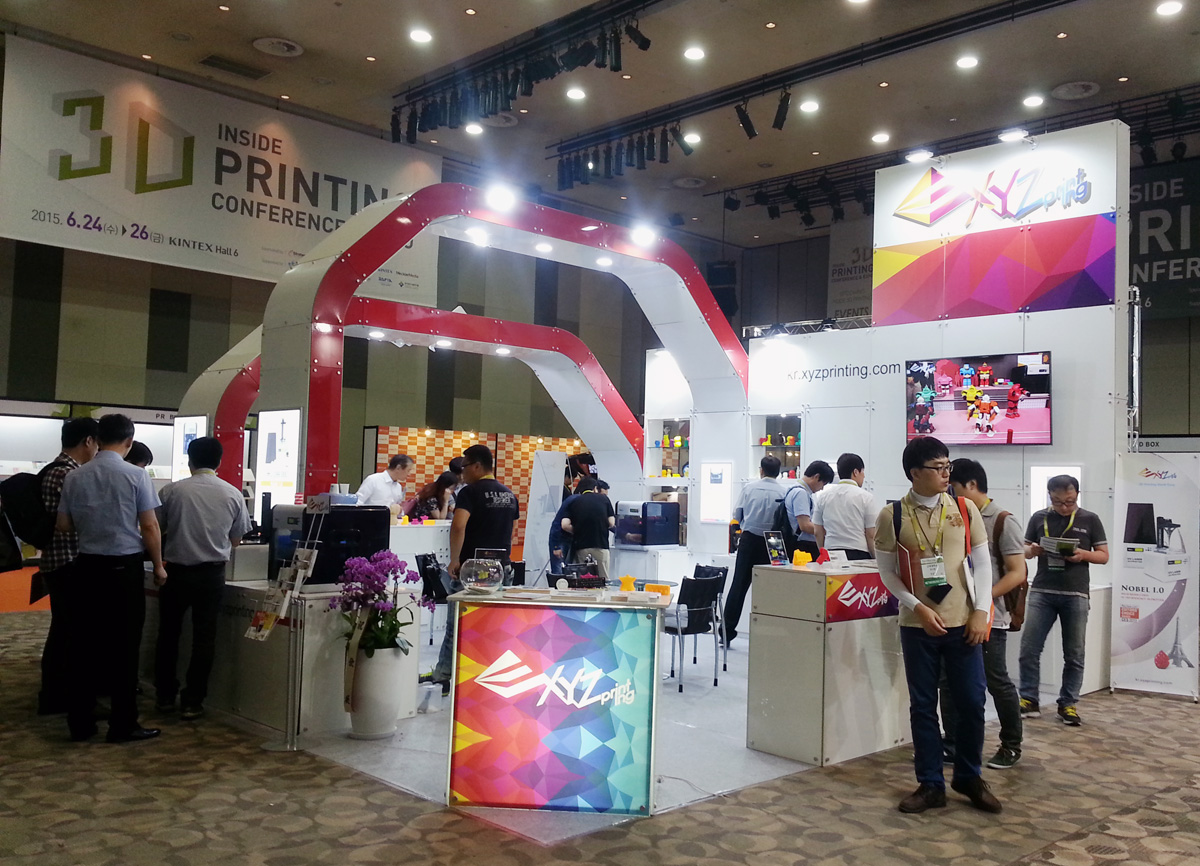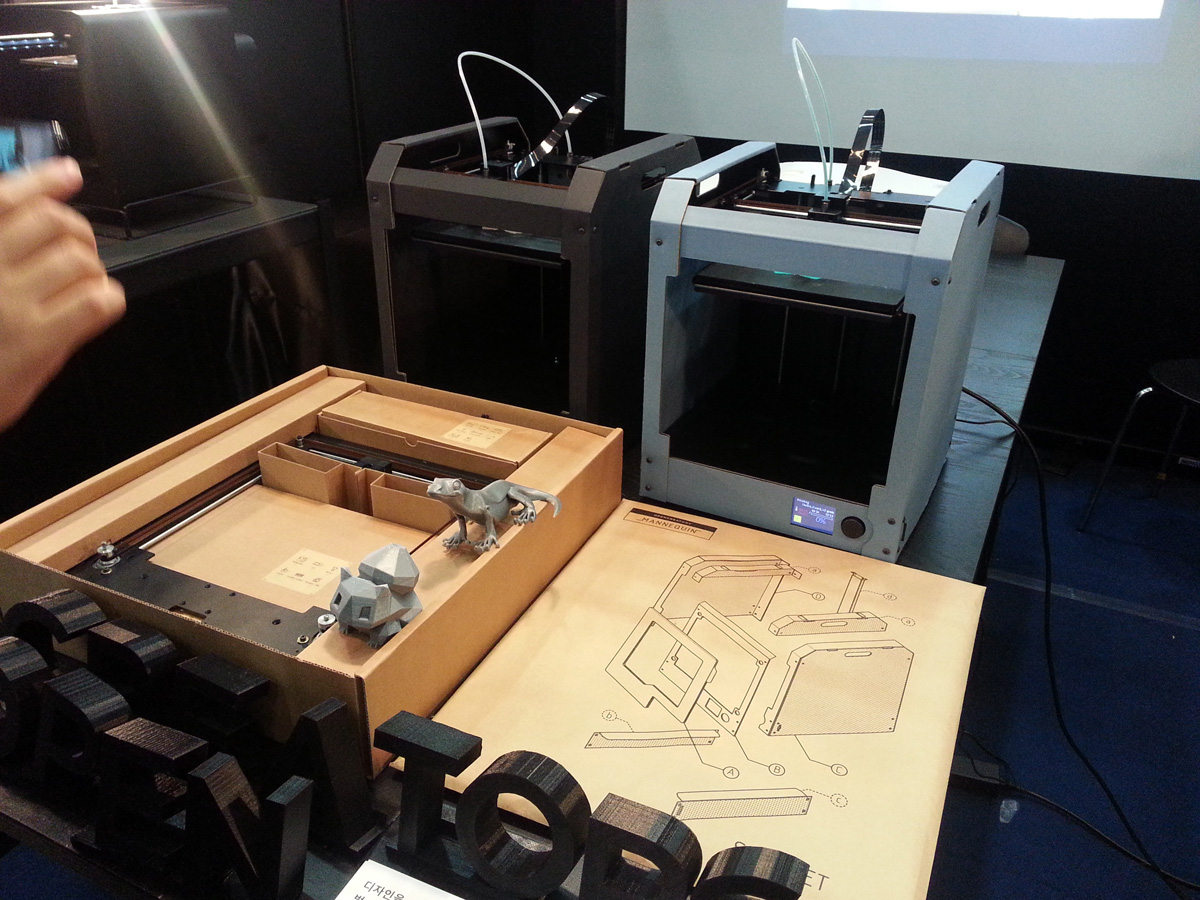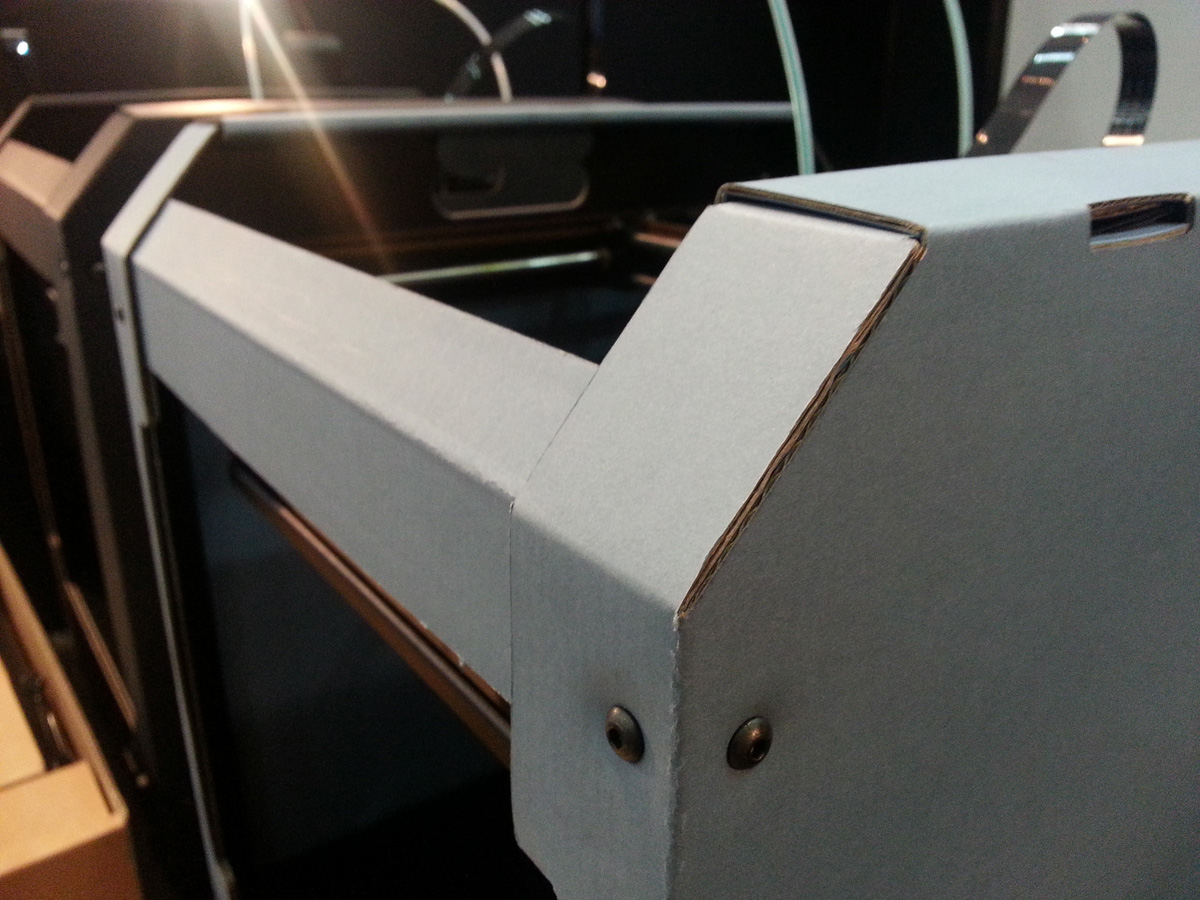Two days ago was the big opening day of the second Inside 3D Printing Show held in Seoul, South Korea, and everyone was naturally very excited. But yesterday was Day 2, so we went there to see if things had calmed down a bit…or not. They had not.
When we walked into the sprawling Kintex complex at 9:00 am, the place was already at a low buzz. Those that came out early had arrived to listen to two key speakers who had been scheduled to give their lectures at the beginning of the morning. The first was You SeokHwan, CEO of Rokit. Rokit was one of the very first 3D printer manufacturers in Korea and is still one of the most important players in the 3D industry inside the country.
Mr. SeokHwan opened his presentation, “The 3D Printing Eco System”, with a brief overview of the industry and its history and then branched off into a far reaching talk on the possible developments in the industry and its related disciplines in the near future. He opined on how the various 3D “practices” would eventually merge into a single overarching social norm, where everyone, Makers and “non-Makers” alike, would get the goods and services they need on demand.
The next speaker was Mr. Ahn DeRae, Deputy Director with the Korean Ministry of Trade, Industry and Energy (MOTIE). He gave a presentation that almost all the business leaders in the audience were rapt to hear, “Policy Support for the 3D Printing Industry.” His talk outlined the many ways that the Korean government was, or was planning on, supporting the development of the Korean additive manufacturing sector.
While many of the plans and programs were of a purely bureaucratic nature, allowing the government to stay informed and in touch with the industry, some were more interesting. Mr. DeRae outlined the progress the government was having setting up the six main regional training centers around Korea, and then spoke about a plan to create a fleet of mobile demo/training vehicles that would travel around into the less populated areas of Korea to bring education and resources to the people more directly. He also spoke about the government’s progress in developing systematic guidelines for evaluating the quality, safety, and efficacy of 3D printed products and supplies to protect Korea from “cheap imports.”
At the break, we went out onto the main floor and tried to visit the booths of those companies we had missed the previous day. One that we visited was OpenCreators, who readers will remember produce the award-winning ‘Almond’ printer. Well, they had something new that, at first, really had me a bit perplexed. A new DIY 3D printer kit made of cardboard! Seriously… cardboard. But on closer inspection, it is a solid-metal-framed, gantry-style printer that has a custom-designed cardboard exterior covering. I don’t know if it will catch on or not, but you can’t fault OpenCreators for not (I’m sorry I can’t resist) thinking outside the box.
We also saw a very clever design studio called ‘Syncky’ who had some of their very interesting doodads on display. My favorite was the ‘retro TV’ iPhone dock, though the mobile missile launch vehicle pencil holder was a close second.
It was then off to lunch, and a quick visit over to the RoboUniverse again…just to make sure we hadn’t overlooked anything. We did give Korea University’s Oculus Rift project the once over…but it made me a little dizzy. I think VR isn’t really my cup of tea. We also saw a Segway-based wheelchair, which was brilliant!
Returning late from lunch, we missed Mark Trageser (Kram-Co, Inc.) and Fan Mingwei’s (Bio3D Technologies) presentations, but I was lucky enough to catch Mr. Mingwei out on the main floor and got to speak to him about his research into bioprinting/regenerative medicine. We spoke about the difficulties involved in the bioprinting field, and the hurdles that have to be crossed before we can realize bioprinting’s full potential.
Reflecting on some of the questions he has faced, he said, “People are always asking when we will be able to print human organs, but what most don’t realize is just how complex a problem that is. A kidney or a liver isn’t just a single function object; it is a highly integrated body part that has several different functions, all of which must work perfectly, often at the same time. For example, a kidney doesn’t just passively filter waste products from the blood, but also releases enzymes and hormones in response to changes in blood chemistry.”
Though a highly circumspect researcher, he was hopeful that the newer computing abilities of big data, deep learning, and AI would assist human scientists to solve the difficult problems they face faster than previous generations had been able to in the past. “I think it will help a lot,” he said.
The rest of the day was a bit of a blur filled with a lot of meetings and networking, so, unfortunately, I missed most of the afternoon speakers…and there was a host of highly qualified people available including: Bryan Ferrand of Mcor, Rootesh Shah of Innovarium, Professor Choi SungKwon, Dr. Baek JungHwan, Natacha Alpert, and Tyler Benster. And, if you missed the event altogether, may the video above magically transport you to Inside 3D Printing Seoul 2015!










